
In 1980, the glass factory in Fuli Town broke ground, and the first glass production line in the history of Shahe was completed. At that time, no one could have foreseen that this small glass factory would lay the groundwork for the national reputation of Shahe's glass industry. It is in this land that Hebei Zhengda Glass Co., Ltd. (hereinafter referred to as Zhengda Glass) came into being, from the difficult start of the early Xiaopingla process, to the steady progress of the introduction of grid technology, and then to fully enter the efficient era of float production - Zhengda Glass has completed the transformation and upgrading of traditional manufacturing with the help of futures tools, and also lit the light of anchoring the direction in the market uncertainty for the industry.
In the 21st century, with the take-off of China's economy and the large-scale promotion of infrastructure construction, the glass industry has ushered in a golden period of development.
At the beginning of 2004, CP Glass invested 60 million yuan to build a kiln three-wire lattice glass production line. In the Shahe glass industry at that time, this investment could be called a "big deal". At the beginning of its establishment, the company was positioned as a professional manufacturer of high-end sheet and ultra-clear glass, and the daily melting capacity at that time was 120 tons.
When the company was first established, General Manager Kong Shekui firmly believed that technology and talents are the foundation of enterprise development. He hired senior engineers and technicians from all over the country with high salaries, which greatly enhanced the company's technical strength. During the production process, he is extremely strict about quality, often saying to us, 'Every piece of glass represents the credibility of the company and must be the best'. Gao Bin, the former director of the Zhengda Glass Office, said.
With the persistent pursuit of quality, CP glass's products quickly opened up the market, not only sold well in many places across the country, but also exported to overseas, gaining a firm foothold in the fiercely competitive glass market.
However, the "strong cyclical" nature of the glass industry is like a "sword of Damocles" hanging high. In 2007, the price of glass fell off a cliff, the number of orders of enterprises fell sharply, and CP Glass was also deeply impacted, with a backlog of finished products and difficulties in capital turnover. Recalling those difficult years, Pang Pujun, deputy general manager of CP Glass, looked solemn: "At that time, we had almost no effective way to deal with price fluctuations, and we couldn't sleep at night. ”
And December 2008 is the real darkest moment for the glass industry. The end of the year is approaching, logistics is suspended, demand is "frozen", the total inventory of the glass industry soars to a historical extreme of 8 million tons, and the price of glass falls below the cost line by 20%.
In order to avoid the continuous depreciation of inventory and the erosion of cash flow, CP Glass raised the hammer and decided to smash thousands of tons of glass for recycling to reduce raw material consumption and financial pressure.
This practice of "surviving with broken arms" quickly spread in the industry. At that time, many glass companies concentrated the inferior glass that had been in stock for more than half a year, and although they bore the loss of the discount of the finished product, they survived by reducing the cost of storage and raw material procurement.
However, this is a stopgap measure after all. During the interview, the reporter of Futures Daily learned that in the downward cycle, adjusting the product structure and controlling the start of operation are difficult choices for glass companies. Shutting down a float glass production line with a daily melting capacity of 600 tons will cause direct losses of "hundreds of millions" in equipment depreciation and employee placement, and enterprises have to weigh it repeatedly, because every decision is a matter of life and death.
Looking back on that period of history, what made Pang Pujun sigh was that it was not only the glass that was broken, but also the shackles of the traditional business model.
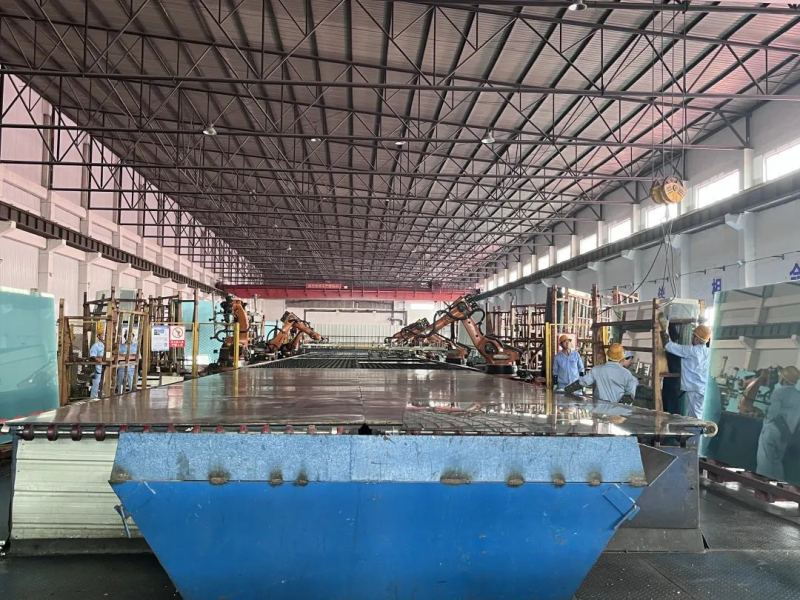
As competition intensifies, it is becoming increasingly difficult for traditional business models to cope with market uncertainty. By chance, the management of CP Glass came into contact with the futures market and embarked on a new road of exploration.
Pang Pujun told reporters that CP Glass's focus on glass futures began in 2012, but it was a few years late to really participate in the futures market. At first, the company's management had a wrong perception of the existence of "high-risk speculative tools" in futures, and took a wait-and-see attitude in the early stage of the listing of glass futures. It was not until 2014 that a key decision appeared - CP Glass applied to become the second batch of glass futures delivery factories.
Behind this decision, there are profound industrial pain points: rigid glass trade channels and inefficient spot circulation. The futures delivery mechanism can provide a stable shipping channel and solve the inventory dilemma of enterprises. As Pang Pujun said: "Becoming a delivery warehouse is not the end, but a door to open the world of futures and presents." ”
After that, on the one hand, CP Glass acted as a delivery service provider, providing standardized warehouse receipt generation, quality inspection, and storage services; On the other hand, it becomes a supply chain coordinator and uses the warehousing network to adjust the balance of regional supply and demand. In addition, the company has built a bridge between futures and spot pricing, and promoted more transparency in spot market pricing through basis quotations.
"The identity of the warehouse has greatly deepened our understanding of the futures market and promoted the formation of a unique 'three-dimensional integration' futures and spot combination model." Pang Pujun said that from a spatial point of view, the futures market can break through geographical restrictions; From the perspective of time, different months of contracts can be used to manage forward production and marketing plans; From the perspective of products, the processing profit can be locked through the price difference between glass and soda ash futures, and the spot production and sales can be scientifically arranged to achieve the optimal allocation of resources.
The practice of CP Glass in the futures market has gone through a process from cautious testing to mature control. In the "testing the waters" hedging stage, CP Glass regards futures as a basic tool to avoid the risk of price fluctuations; After entering the strategic arbitrage stage, companies will take the initiative to capture the spread opportunities in the market; Today, the company has built a comprehensive risk management system covering the entire industry chain. Every leap is the sublimation of CP Glass's understanding of the futures market.
In 2023, the market will be changing, and CP Glass will break through against the trend with its mature combination of futures and spots. "At the beginning of the year, through in-depth analysis of industry data, we predict that the supply of soda ash will continue to be tight." Pang Pujun said that in January 2023, when the price of soda ash futures was at 2,800 yuan/ton, the company decisively bought 5,000 tons of soda ash futures contracts. Within one month, the spot price of soda ash rose significantly, and the company successfully saved 800,000 yuan in procurement costs.
In April 2023, the glass market was sluggish, and spot prices continued to be under pressure. CP Glass quickly sold the glass futures contract at a price of 1,880 yuan/ton for hedging. Through the operation of "selling at a high price in the futures market and maintaining sales in the spot market", the risk of price decline has been effectively hedged and the cash flow of the enterprise has been stabilized.
In May 2023, the price difference between glass and soda ash reached 800 yuan/ton, far exceeding the break-even point of 600 yuan/ton. "This not only locks in profits, but also demonstrates our ability to deeply integrate futures tools into the whole process of production and operation." Pang Pujun said.
Nowadays, the classic operation of "locking costs, maintaining inventory, and precise arbitrage" has become a vivid footnote to the comprehensive risk management of CP Glass.
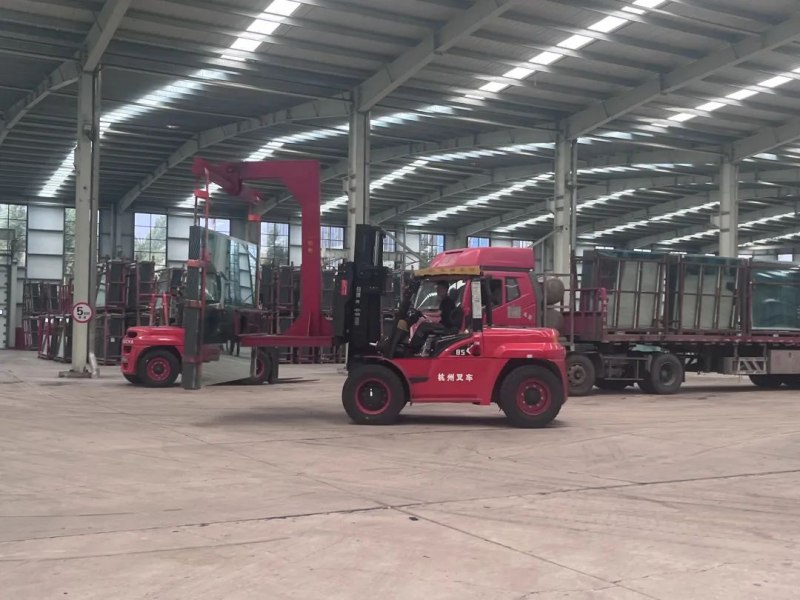
In the market wave full of uncertainties, futures tools have become a strategic weapon for CP Glass to resist risks and move forward steadily.
In 2023, the area of real estate completions will continue to decline, and the demand for glass market will shrink sharply. CP Glass keenly grasped the market signal, and at the beginning of the downward trend of the industry, it decisively sold the glass futures contract and locked the product sales price, so as to stabilize the production profit within expectations. "Even under the severe situation of sharp decline in terminal demand, the company's operating performance remained stable and successfully survived the 'cold winter'." Pang Pujun said.
In 2024, the glass industry will face the dilemma of structural surplus, and the capacity utilization rate of the whole industry will only be 70%. Relying on the advantages of the delivery factory, CP Glass converts 300,000 weight boxes of inventory glass into standard warehouse receipts, which not only effectively alleviates the inventory pressure of enterprises, but also provides new ideas for the industry to resolve the problem of excess inventory, highlighting the important role of the futures market in regulating the balance between supply and demand.
What Pang Pujun remembers vividly is the classic "battle" of CP Glass's use of soda ash futures.
At the beginning of 2024, the atmosphere in the conference room of Zhengda Glass was solemn, and Lao Zhou, the purchasing supervisor, trembled slightly with his hand holding the report: "It fell by 30% in a single month, according to this trend, the loss of soda ash we hoarded is too great!" ”
"Last month's industry report showed that the country's new soda ash production capacity was 2.2 million tons, and the inventory is almost at an all-time high!" Xiao Zhang, who is in charge of risk control in the CP glass futures team, hurriedly reported, "The inventory consumption ratio curve on the disk has a red arrow pointing to the peak of 1.8, as if there is too much soda ash in the market to be used up, and the price will definitely not be able to hold up." ”
Hearing this, after comprehensive consideration, Pang Pujun immediately decided to start the hedging program. According to his recollection, at that time, CP Glass sold 60% of its raw material inventory at a price of 1,800 yuan/ton. However, the market is far more brutal than expected. When the price of soda ash futures fell below 1,500 yuan/ton, there was silence in the trading room. Pang Pujun stared at the K-line chart and said calmly: "Close some short orders and buy call options." Faced with the shocked gaze of his colleagues, he explained that the market panicked too much and that prices could not fall endlessly. In his view, options are like buying an insurance policy for a company - if it rises, it can make up for the income, and if it falls, it will only lose some "premiums".
A few months later, a report had the entire conference room boiling. The futures hedging allowed CP Glass to successfully avoid a loss of 3.2 million yuan, and those option premiums brought an additional income of 850,000 yuan. "This actual combat has proved that the strategy of 'monitoring the market→ decisive hedging → flexible adjustment' is our 'safety lock' against risks! Every step in the future, we must let the data speak for ourselves and use strategies to defend ourselves. Pang Pujun said firmly.
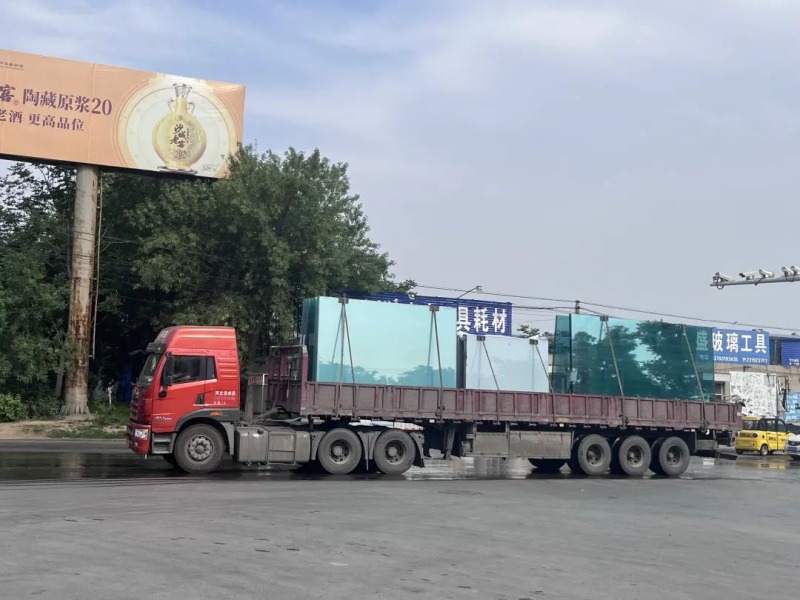
Looking back on the ten eventful years that have gone hand in hand with the futures market, Pang Pujun is full of emotion. In this challenging journey, he led the team to continue to explore and summarize, and gradually built a mature and complete set of futures and spot trading mechanisms. From the construction of the trading system, to the improvement of the risk control system, to the innovation of the operation mode, every link demonstrates the wisdom and resilience of the enterprise to cope with the complex market environment.
In 2014, CP Glass officially established the Futures Department, taking a key step to explore the integration of futures and spots. At the beginning of its establishment, the executive team was temporarily composed of personnel from the sales department and the futures department. With the changes in the market environment and the deepening of the use of futures, enterprises realize the urgency of improving the risk control system. In just half a year, the three core groups of risk control, execution and decision-making were quickly formed, forming an "iron triangle" structure of close cooperation: the executive team is responsible for strategic planning and implementation, the risk control team strictly controls financial and transaction risks, and the decision-making team led by the general manager coordinates the strategic direction.
The efficient operation of this mechanism is reflected in the details: after the transaction plan is submitted, the decision-making process is closed in a short time; The risk control team generates monitoring reports on a daily basis to dynamically monitor the size of positions and margin ratios. When it comes to hedging finished products, the sales department needs to provide core data such as inventory turnover rate and customer orders to ensure that the hedging solution accurately matches market demand.
This rigorous risk management mechanism enables CP Glass to always respond to risks and challenges in a complex and changeable market environment.
"Improving the risk management system and strengthening the risk management and control of each link is the key to improving the effectiveness of risk management in practice." According to Pang Pujun, when the new crown epidemic broke out, in the face of supply chain disruption, CP Glass not only ensured the stable supply of 37 key customers in Central China with the strategy of "dynamic stop loss + rolling hedging", but also achieved an additional profit of 15% through futures hedging, and verified the effectiveness of each risk monitoring link.
"No hedging below production costs, no inventory and no hedging" - these two iron laws engraved on the whiteboard of the trading room are the survival code of CP Glass in the past ten years. "Market volatility is like a storm at sea, and only by strictly adhering to the bottom line of risk control can we avoid being swallowed up by the wave of speculation." Pang Pujun said.
He particularly emphasized that the company has set a strict red line for the purchase of raw material hedging, and the total amount of purchase hedging must not exceed 3 months of in-plant use, which effectively avoids the risk of "excessive operation to speculation" of the enterprise.
In Pang Pujun's view, inventory and profit are like two ends of the scale, and the task of the enterprise is to find the most delicate balance. When the warehouse is full of raw glass, the team will use futures and options tools to capture market opportunities, preserve or sell inventory and achieve excess profits. When the market releases positive signals and profit margins open, the team operates flexibly according to the inventory ratio.
CP Glass has proved in ten years that the real industry deeply embraces financial instruments, which can not only resist market storms, but also forge the core competitiveness through the cycle.
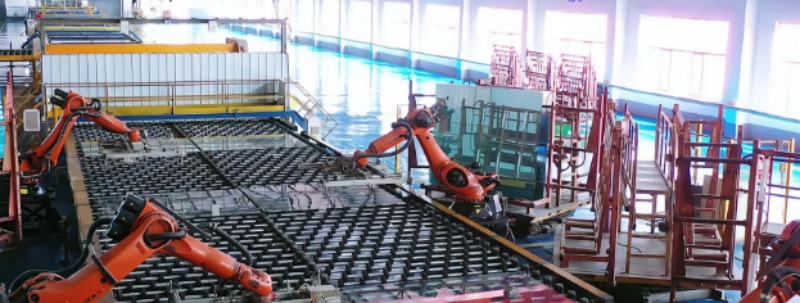
Today, the futures market is not only a "safe haven" for enterprises to avoid risks, but also an "engine" to drive change.
A group of dazzling data has witnessed the transformation of CP Glass: the fluctuation range of quarterly profit margin has narrowed from ±15% to ±5%, and the operating stability has been greatly improved; The inventory turnover efficiency has climbed from 6.3 times in 2019 to 9.8 times in 2024, and the time spent in the warehouse has been greatly shortened, and futures tools are deeply embedded in all aspects of business operations, and the notional value of futures contracts held by the company will account for 38% of revenue in 2024. The capacity utilization rate of the enterprise has always been maintained at more than 85%, far exceeding the industry average.
In the key process of corporate strategic restructuring, futures tools have become the core engine driving CP Glass to achieve leapfrog development, helping enterprises complete two milestone transformation and upgrading.
Relying on the profound experience in the combination of futures and spots, CP Glass will establish a professional trading subsidiary in 2023, using the futures market as a link to deeply integrate the resources of the industrial chain, and realize the magnificent transformation from a traditional manufacturer to an integrated service provider of industry and trade.
"By carrying out basis trade, warehouse receipt pledge, futures and spot arbitrage and other businesses, CP Glass not only provides diversified risk management solutions for upstream and downstream customers, but also opens up new profit growth points for the company." Pang Pujun said that in just two years, the company's trade sector revenue accounted for less than 10% to 25%, marking the company's successful breakthrough in the single development model of traditional manufacturing, building a "production + trade + service" complex business system, and occupying a more favorable position in the market competition.
"In terms of talent team building, CP Glass adheres to the localization cultivation strategy. Different from some enterprises that rely on external consultant teams, the company focuses on cultivating local backbones who are not only proficient in the ecology of the Shahe glass industry, but also proficient in futures and derivatives operations. Pang Pujun believes that these professionals who "know the industry and understand the market" make enterprises more sensitive in market research and judgment and strategy formulation, and their response efficiency far exceeds that of competitors in the same industry who rely on "foreign aid". This makes CP Glass stand out in the field of the combination of futures and present, and become a benchmark for innovation and development in the glass industry.
As a regional glass industry leader and the industry and finance base of Zhengshang Law Firm, CP Glass actively fulfills its industry responsibilities and innovatively launches the "cooperative hedging" model. At present, the company has joined forces with more than 10 small and medium-sized glass deep processing enterprises to integrate resources from all parties to jointly formulate hedging strategies, and help small and medium-sized enterprises improve their risk management capabilities by sharing market information and sharing hedging risks, effectively reducing the impact of price fluctuations on the industrial chain. "This model has significantly enhanced the resilience and anti-risk ability of the regional industrial chain, promoted the upstream and downstream enterprises of the industrial chain to form a community of shared future with risks and benefits, and demonstrated the unique value of futures tools in promoting the coordinated development of the industry." Pang Pujun said.
Standing at a new starting point for development, the management of CP Glass is well aware that futures tools are not only a shield to avoid market risks, but also a sword to open up the market. Through in-depth analysis of market data, enterprises can more accurately predict price trends and deploy production and inventory in advance. In long-term strategic planning, the futures market is also an important basis for enterprises to formulate capacity expansion and regional layout.
"We look forward to the continuous improvement of the futures market system and the full play of its functions. In the future, we will continue to deepen the application of futures, explore more innovative models, and sail towards a new blue ocean of high-quality development with the help of futures. Pang Pujun's words were sonorous, outlining a grand blueprint for the future development of the enterprise.
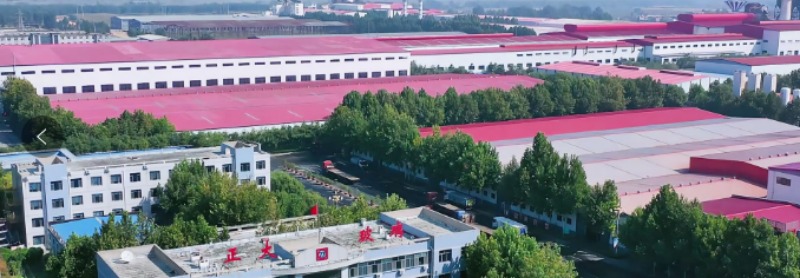
China's glass industry is undergoing an unprecedented and profound change. Hebei Zhengda Glass relies on the futures market to achieve a breakthrough, providing a valuable model for the transformation and upgrading of Shahe glass industry and even the entire industry.
The traditional glass manufacturing industry has long been trapped by price fluctuations, overcapacity, meager profits and other shackles. The large fluctuation of raw material prices makes it difficult to control the cost of enterprises; The imbalance between supply and demand in the market makes the finished products stranded and unsalable. The futures market has injected new momentum into the development of the industry, allowing glass companies to find a way to break the situation.
In the face of market turbulence and price fluctuations, the glass industry enterprises represented by CP Glass have not only avoided market risks through the precise use of futures and options tools, but also optimized their business strategies and realized the transformation from passive response to active control.
Walking into the Zhengda Glass Factory, the shuttle loading vehicles and the scientific and reasonable inventory are actually the company's accurate insight into the pulse of the market. From the practice of CP Glass, it is not difficult to see that the futures market has not only become a "safe haven" for enterprises to resist market risks and a "new engine" for value creation, but also a strong driving force for the real economy to move towards high-quality development. It not only helps enterprises to operate stably in the midst of market fluctuations, but also promotes the development of the entire industry to a higher level and higher level.
Represented by the Shahe area, many glass companies are moving towards high-end under the empowerment of the futures market. With the help of the price discovery function of the futures market, they can predict the industry cycle and market trends, and reasonably plan production and inventory. Through innovative models such as basis trade and "futures pricing + flexible supply", we will expand sales channels, improve customer service quality, and enhance market competitiveness; Leverage functions such as warehouse receipt pledge financing to optimize corporate cash flow, provide financial support for technology research and development and equipment upgrading, and promote the development of high-end, intelligent and green products.
From passive defense to active change, the deep integration of the futures market and the glass industry has become a vivid footnote to the transformation and upgrading of China's real economy. In the future, with the continuous deepening of the combination of industry and finance, the "safety lock" of hedging, the "navigator" of price discovery, and the "accelerator" of resource allocation will be superimposed and resonant, and China's glass industry will surely go further and more steadily on the road of transformation and upgrading.
Name: Litong Glass
Mobile:+86 16632961602
Tel:+86 16632961602
Email:vip@litongglass.com
Add:Shahe city,Hebei,China